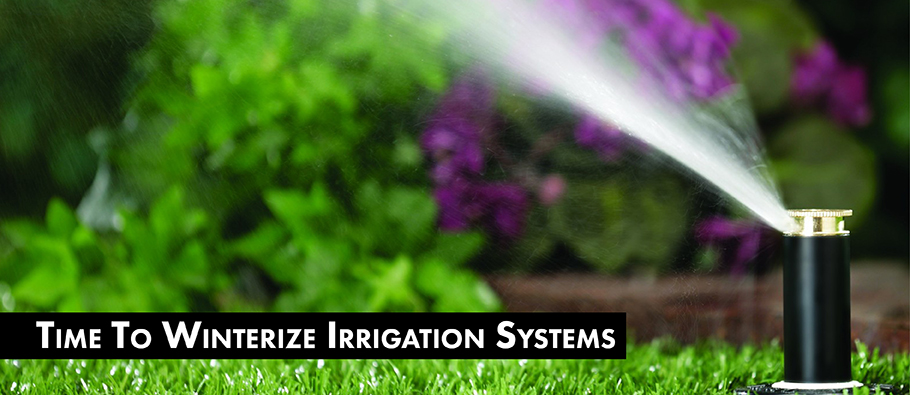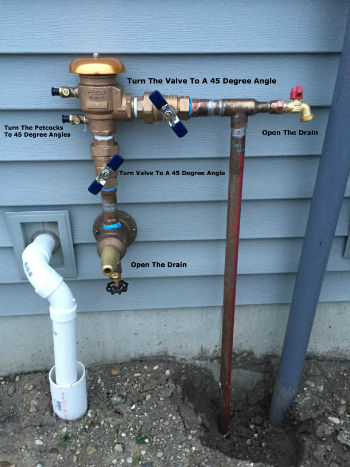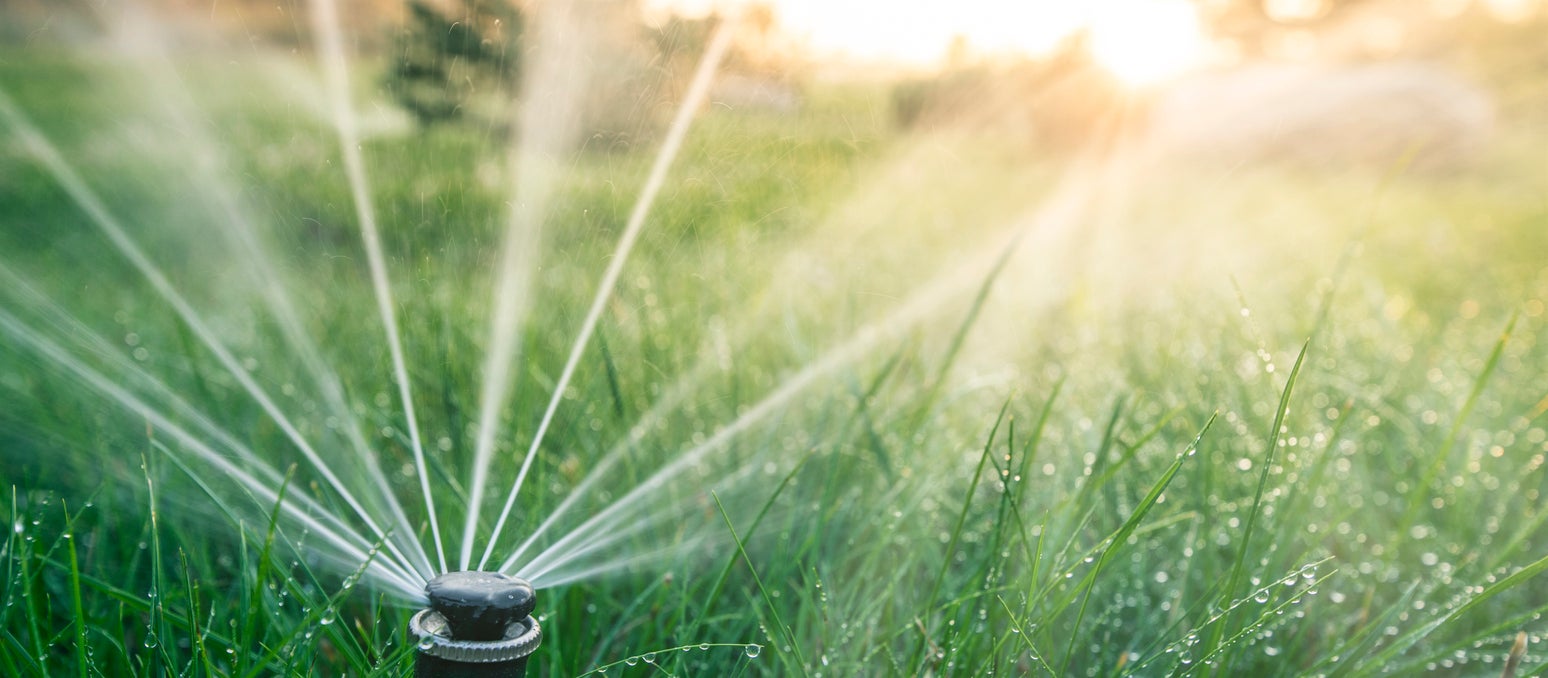To drain the sprinkler system, turn off the water supply and open the drain valves. Proper maintenance of your sprinkler system is essential to ensure its longevity and efficient operation.
One crucial aspect of this maintenance is draining the system, which helps prevent water freezing and causing damage during colder months. By following a few simple steps, you can effectively remove any remaining water from the pipes and components of your sprinkler system.
In this guide, we will walk you through the process of draining your sprinkler system to protect it from potential winter damage and ensure it functions optimally when spring arrives.
Contents
Why Winterizing Is Important?
Winterizing your sprinkler system is crucial for preventing damage from freezing temperatures.
Draining the system ensures no water is left to freeze and expand, causing costly leaks and repairs.
Regular maintenance like this can extend the lifespan of your sprinkler system and save you money in the long run.
Prevents Damage From Freezing:
Proper winterization of your sprinkler system prevents costly damage from freezing temperatures.
Extends Lifespan Of Sprinkler System:
Winterizing your sprinkler system extends its lifespan by preventing damage from freezing.
Preparing For Winterizing
Preparing your sprinkler system for winter is crucial to protect it from potential damage.
One of the essential steps in this process is draining the system to prevent freezing, which can lead to costly repairs.
Taking the time to properly prepare your sprinkler system for winter will save you a lot of time and money in the long run.
Gather Necessary Tools And Materials
Before you begin the process of draining your sprinkler system, make sure you have all the necessary tools and materials on hand.
The following checklist will help you prepare:
- Compressor or air compressor
- Air hose
- Adjustable wrench
- Screwdriver
- Tape measure
- Winterizing kit (optional but highly recommended)
Get A Winterizing Kit
Investing in a winterizing kit can simplify the process of draining your sprinkler system. These kits typically include all the necessary components to help you effectively remove any remaining water from the system.
Some of the items commonly found in a winterizing kit include:
- Blowout fitting
- Quick-connect fittings
- Pressure gauge
- Instructions for use
Having a winterizing kit can make the winterization process more efficient, ensuring that your sprinkler system is properly prepared for the colder months ahead.
Step-by-step Guide To Drain The Sprinkler System
Are you ready to prepare your sprinkler system for the winter? Ensuring your sprinkler system is drained properly is essential to avoid costly damage from freezing temperatures.
Follow this step-by-step guide to drain the sprinkler system and protect your investment.
Turn Off The Water Supply
Locate the main water supply valve for your sprinkler system and turn it off. This will prevent any additional water from entering the system as you proceed with the draining process.
Open All The Valves
Open all the control valves on the sprinkler system to allow the water to flow out of the pipes and heads.
Drain The Backflow Preventer
- Shut off the valves connected to the backflow preventer.
- Turn the handles on the preventer to the 45-degree angle position.
- Open the test cocks to release any remaining water in the device.
Use An Air Compressor To Blow Out Water
Connect the air compressor to the sprinkler system and slowly increase the pressure to blow out the water from the pipes and heads. Work your way through each zone, ensuring that all the water is expelled.
By following these steps to drain your sprinkler system, you can safeguard it from potential damage caused by freezing temperatures.
Properly winterizing your sprinkler system will help extend its lifespan and save you from expensive repairs in the future.
Tips For Efficient Winterizing
- Begin the process of winterizing your sprinkler system well in advance.
- Consult the manufacturer’s guidelines to ensure proper winterization.
- Inspect your system for any leaks that may need repair before winter.
- Ensure exposed components are adequately shielded from freezing temperatures.
- When draining the sprinkler system, it’s crucial to consider the following tips to efficiently prepare it for winter.
- Commence the winterization process with ample time to avoid potential issues.
- Adhere to the precise instructions provided by the manufacturer for optimal results.
- Thoroughly examine the system for leaks, and address them promptly to prevent damage.
- Take measures to shield exposed components from winter conditions to maintain system integrity.
Common Mistakes To Avoid
Incomplete Drainage
One of the most common mistakes people make when draining their sprinkler system is not fully draining all the water from the pipes. Incomplete drainage can lead to serious issues, such as freezing and bursting pipes during the winter months.
Remember that even a small amount of water left in the system can freeze and cause damage. To ensure complete drainage, be thorough in following the steps outlined in the previous section.
Forgetting To Disconnect Hoses
It’s important to remember that your sprinkler system is not the only part of your landscape that requires attention when preparing for winter.
Many homeowners make the mistake of forgetting to disconnect hoses from outdoor faucets before draining the sprinkler system.
Leaving the hoses connected can cause water to backflow into the system, making the draining process ineffective. Always disconnect hoses from outdoor faucets and ensure they are properly stored for the winter.
Ignoring Regular Maintenance
Regular maintenance is crucial for the efficient operation of your sprinkler system and to prevent any potential issues. Unfortunately, many people make the mistake of neglecting routine maintenance tasks.
Ignoring regular maintenance can lead to clogged nozzles, leaking valves, and other problems that can affect the performance of your system. Ensure you inspect and clean the system regularly, replace worn-out parts, and address any issues promptly.

Troubleshooting And Faqs
Learn how to drain your sprinkler system with these troubleshooting tips and commonly asked FAQs. Quickly and easily remove excess water to keep your system running smoothly.
Can I Diy Or Should I Hire A Professional?
Draining your sprinkler system is an essential step towards protecting it from freezing temperatures and potential damage during the winter months.
However, you may encounter some difficulties or have questions along the way. Here are some common troubleshooting tips and frequently asked questions about draining your sprinkler system.
What If I Don’t Have An Air Compressor?
If you don’t have an air compressor, don’t worry! There are alternative methods you can try to drain your sprinkler system effectively. One option is to use a manual blow-out method using a shop vac and an adapter.
Attach the shop vac to the blowout port on your sprinkler system and let it run until all water is removed from the lines.
Another option is to use a drain valve to slowly release the water from the system. Remember to open all the valves and drain caps to facilitate the process.
What If Water Still Remains In The System?
If you have followed the draining process but water still remains in your system, there may be a blockage or some other issue causing the water to get trapped.
In this case, it is recommended to consult a professional sprinkler system technician. They have the expertise and tools to diagnose and resolve any problems, ensuring that your system is properly drained.
How Often Should I Winterize?
The frequency of winterizing your sprinkler system depends on your geographical location and climate. In areas with colder and longer winters, it is recommended to winterize your system annually before the freezing temperatures arrive.
However, in milder climates, you may choose to winterize every other year or as needed. It is always best to check with a local sprinkler system professional for personalized guidance based on your specific circumstances.
Can I Diy Or Should I Hire A Professional?
Whether to DIY or hire a professional for draining your sprinkler system depends on your comfort level with the process and the complexity of your system.
If you have experience with similar tasks, access to the necessary equipment, and feel confident in your abilities, DIY may be a viable option.
However, if you are unsure or have a complex sprinkler system, it is recommended to hire a professional. They have the knowledge and expertise to ensure the process is done correctly, reducing the risk of any potential damage.
Alternative Winterizing Methods
When it comes to winterizing your sprinkler system, there are alternative methods you can use to ensure proper drainage and protection against freezing temperatures.
These alternative winterizing methods can be helpful in situations where traditional methods may not be feasible or convenient.
Using A Manual Drain Valve
One simple alternative method for draining your sprinkler system is to use a manual drain valve. This method involves locating the manual drain valve on your irrigation system and opening it to allow the water to drain out.
The process is fairly straightforward and can be an effective way to remove water from the pipes to prevent freezing damage.
Using A Drainage Pump
If you don’t have access to a compressed air system or if draining the system manually is not practical, using a drainage pump can be an effective alternative.
A drainage pump can help to remove water from the pipes and prevent freezing during the winter months. This method can be particularly useful for larger irrigation systems or those located in areas where access to compressed air may be limited.

Frequently Asked Questions On How To Drain The Sprinkler System
How Do I Get Water Out Of My Sprinkler System?
To remove water from a sprinkler system, turn off the water supply and run the sprinklers until the water stops flowing.
Do Sprinkler Systems Have A Drain?
Yes, sprinkler systems typically have a drain to prevent water from freezing and causing damage.
The drain allows water to escape when the system is turned off, preventing freezing.
Regular maintenance of the drain is essential to ensure the system functions properly.
Where Is The Drain Valve On A Sprinkler System?
The drain valve on a sprinkler system is typically located at the lowest point of the system.
It is essential for draining water to prevent freezing and potential damage during the winter months.
Regular maintenance of the drain valve is crucial for optimal system performance.
How Long Does It Take To Drain A Sprinkler System?
It typically takes 1-2 hours to drain a sprinkler system, but the exact time can vary depending on system size and complexity.
Conclusion
In brief, draining your sprinkler system is crucial to prevent freezing damage. Remember to follow these steps regularly for optimal performance.
Keep your system well-maintained to extend its lifespan. Taking care of your sprinkler system will save you time and money in the long run.

